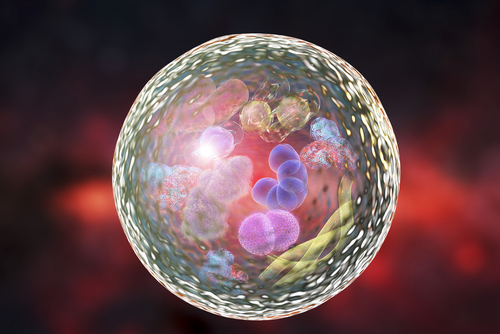Suppressing a protein that promotes the inflammation associated with Gaucher and other lysosomal storage diseases could lead to new treatments for the conditions, researchers say.
Scientists from the Cincinnati Children’s Hospital Medical Center and the University of Lübeck in Germany discovered that a protein called complement component 5a (C5a) and its receptor, C5aR1, play key roles in regulating the glucosylceramide (GC) the body produces.
Normal levels of glucosylceramide protect cells and promote their proliferation, but too much can lead to Gaucher.
“Current enzyme replacement and substrate reduction therapies are expensive and still associated with inflammation, increased risk of malignancies and Parkinson’s disease,” Manoj Pandey, the first author of the study, said in a news release. “We suggest that targeting a molecule called C5aR1 may serve as a viable treatment option for patients with Gaucher disease and possibly other LSDs,” added Pandey, a scientist in the Division of Human Genetics at Cincinnati Children’s.
The study, “Complement drives glucosylceramide accumulation and tissue inflammation in Gaucher disease,” was published at the scientific journal Nature.
Mutations of the gene GBA1, which encodes the enzyme glucocerebrosidase (GCase), are known to promote glucosylceramide accumulation in immune cells in the spleen, liver, lung and bone marrow. The process is often followed by chronic inflammation, but scientists have yet to determine the connection between glucosylceramide accumulation and the inflammation.
Researchers found higher levels of the pro-inflammatory protein C5a in the bloodstream of mice models with Gaucher. In addition, the immune cells of the animals expressed more of the protein C5aR1 than expected. The findings suggested that C5aR1 was promoting the activation of the C5a pro-inflammatory pathway, triggering an immune and inflammatory response.
Drugs that inhibited C5a activity protected the Gaucher mice from pro-inflammatory symptoms, almost completely stopped glucosylceramide accumulation, and improved the animals’ overall survival.
“We propose a dual role model for the C5a–C5aR1 axis in Gaucher disease,” the authors wrote. “It is as a critical pathway promoting the excessive cellular accumulation and release of GC, which leads to extensive complement activation and systemic and tissue C5a generation. But it also activates the pro-inflammatory response, eventually causing tissue damage and the resultant Gaucher disease manifestations.”
Additional studies are needed before scientists can decide that C5aR1-based therapies might be effective and safe enough to test in humans, the research team said.
They plan to evaluate the commercially available anti-C5 monoclonal antibody called eculizumab (Soliris) as a possible adjuvant, or supplemental, therapy for Gaucher and other lysosomal storage diseases.


